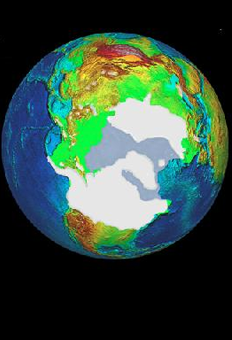NOAA/WDS Paleoclimatology - Global 1500 Year Spatial Temperature Reconstructions
This archived Paleoclimatology Study is available from the NOAA National Centers for Environmental Information (NCEI), under the World Data Service (WDS) for Paleoclimatology. The associated NCEI study type is Climate Reconstruction. The data include parameters of climate reconstructions with a geographic location of Global. The time period coverage is from 1450 to -56 in calendar years before present (BP). See metadata information for parameter and study location details. Please cite this study when using the data.
Dataset Citation
- Cite as: Mann, M.E.; Zhang, Z.; Rutherford, S.; Bradley, R.S.; Hughes, M.K.; Shindell, D.; Ammann, C.M.; Faluvegi, G.; Ni, F. (2010-04-01): NOAA/WDS Paleoclimatology - Global 1500 Year Spatial Temperature Reconstructions. [indicate subset used]. NOAA National Centers for Environmental Information. https://doi.org/10.25921/z7xs-tv44. Accessed [date].
- Please refer to Credit tab for full citation information.
Dataset Identifiers
- doi:10.25921/z7xs-tv44
- noaa-recon-12036
- NCEI DSI 1200_02
- NCEI DSI 1200_01
ISO 19115-2 Metadata
noaa-recon-12036
| Search Data |
|
| Download Data |
|
| Distribution Formats |
|
| Ordering Instructions | Contact NCEI for other distribution options and instructions. |
| Distributor |
NOAA National Centers for Environmental Information ncei.info@noaa.gov |
| Dataset Point of Contact |
NOAA National Centers for Environmental Information ncei.info@noaa.gov |
| Dataset Point of Contact | Data Center Contact NOAA World Data Service for Paleoclimatology 828-271-4800 paleo@noaa.gov |
| Coverage Description | Date Range: 500 CE to 2006 CE; Date Range: 1450 cal yr BP to -56 cal yr BP; |
| Time Period | 500 to 2006 |
| Spatial Bounding Box Coordinates |
West: -180
East: 180
South: -90
North: 90
|
| Spatial Coverage Map |
| General Documentation |
|
| Associated Resources |
|
| Publication Dates |
|
| Data Presentation Form | Digital table - digital representation of facts or figures systematically displayed, especially in columns |
| Dataset Progress Status | Complete - production of the data has been completed |
| Data Update Frequency | Data update frequency not available |
| Supplemental Information | STUDY NOTES: Supplemental information for: Mann et al. Science, 326:1256-1260. The data series shown in Figure 1 Each of the following files corresponds to a panel in Figure 1. Files have 4 columns, year, reconstruction, -2sigma and +2sigma. File name ending in "all" are from the "allproxy" or full network reconstruction and file names ending in "scr" are from the "screened" proxy reconstruction. For each series, the years 1850-2006 are the PC-filtered instrumental data. That is, the instrumental data but retaining the first 7 PCs, the number that were retained in the 1800-1849 reconstruction step. AMO Full - file amoall.txt AMO screened - file amoscr.txt Northern Hemisphere full - file nhall.txt Northern Hemisphere screened - file nhscr.txt NINO3 full - file nino3all.txt NINO3 screened - file nino3scr.txt PDO full - file pdoall.txt PDO screened - file pdoscr.txt Global SST full - file sstall.txt Global SST screened - file sstscr.txt The Spatial Reconstruction The Spatial Reconstruction is a large file and has been gzipped. Column 1 is year, columns 2-2593 are gridboxes. Years 1850-2006 are the PC-filtered instrumental data (retaining 7 PCs). The RegEM infilled instrumental data can be found in the "allproxy" tarball listed below. File allproxyfieldrecon.gz The longitudes and latitudes for each gridbox are listed in file longlat.txt Code and Data The "allproxy" code and data are in a gzipped tarball, file name allproxy.tar.gz. After unpacking the tarball, you will have to change the paths in the code to run on your machine. See the "README.txt" in the tarball for more information. The RegEM code is included but is from Tapio Schneider's Web Site: http://www.gps.caltech.edu/~tapio/ Metadata for the proxies used here and in Mann et al., 2008 are in an Excel file, filename 1209proxynames.xls All the proxy series are in the directory for Mann et al. 2008: https://www.ncei.noaa.gov/pub/data/paleo/contributions_by_author/mann2008/ and information about the proxies can be found there. Verification data are in the matlab file named verificationpost.mat, and the code is in the matlab file indexverifypost.m. Included are the gridbox verification scores, the monte carlo, red-noise significant levels and the code to calculate the spatial series RE/CE values. ABSTRACT SUPPLIED BY ORIGINATOR: Global temperatures are known to have varied over the past 1500 years, but the spatial patterns have remained poorly defined. We used a global climate proxy network to reconstruct surface temperature patterns over this interval. The Medieval period is found to display warmth that matches or exceeds that of the past decade in some regions, but which falls well below recent levels globally. This period is marked by a tendency for La Niña-like conditions in the tropical Pacific. The coldest temperatures of the Little Ice Age are observed over the interval 1400 to 1700 C.E., with greatest cooling over the extratropical Northern Hemisphere continents. The patterns of temperature change imply dynamical responses of climate to natural radiative forcing changes involving El Niño and the North Atlantic Oscillation-Arctic Oscillation. |
| Purpose | Records of past temperature, precipitation, and other climate variables derived from paleoclimate proxies. Parameter keywords describe what was measured in this data set. Additional summary information can be found in the abstracts of papers listed in the data set citations. |
| Dataset Citation |
|
| Cited Authors |
|
| Originators |
|
| Publishers |
|
| Theme keywords |
Global Change Master Directory (GCMD) Science Keywords
|
| Data Center keywords |
Global Change Master Directory (GCMD) Data Center Keywords
|
| Place keywords |
|
| Use Constraints |
|
| Access Constraints |
|
| Fees |
|
Last Modified: 2024-03-11
For questions about the information on this page, please email: ncei.info@noaa.gov
For questions about the information on this page, please email: ncei.info@noaa.gov

